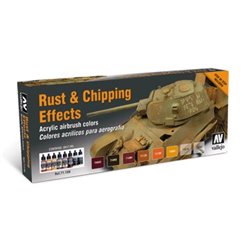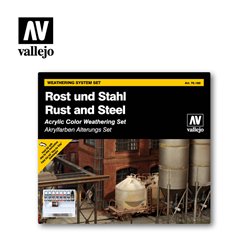When it comes to hobby knives, the expensive part of the knife is often the bits surrounding the blade and not the...
No products
Product successfully added to your shopping cart
There are 0 items in your cart. There is 1 item in your cart.
Search Tips
Christmas and New Year
We are dispatching orders every weekday apart from Christmas Day, Boxing Day and New Year's Day.
If you order is time critical, select next day delivery at checkout.
The shop in Sandown is closed from 25th December, reopening on 30th December.
What is the colour of rust?
The answer to the question "What is the colour of rust?" is more a tip about modelling in general than a lesson in rust.
The problem is, that we all have predetermined concepts of what colour everything in the world should be, probably ingrained in our heads since primary school when lollypop trees were bright green, people were pink and rust was orange.
But nature in the real world is not limited to the colour of some felt tips in a pot and chemical reactions, host metals and age of decay all have a part to play in the eventual appearance of rust.
As it happens our childhood perception is not far wrong and most rust will adopt a blend of oranges as well as browns and even some greens, but the keyword is blend!
Younger rust will be brighter and more orange than older rust.
Our top tip is to examine some photos or even better a real specimen of rusty infrastructure such as a bridge and try to forget that you are looking at rust, just concentrate on the colours present and how they flow, merge and interact with each other. Only then can you confidently get the paintbrushes out.
Click here to receive the tips weekly in your mailbox. You can unsubscribe at any time.









